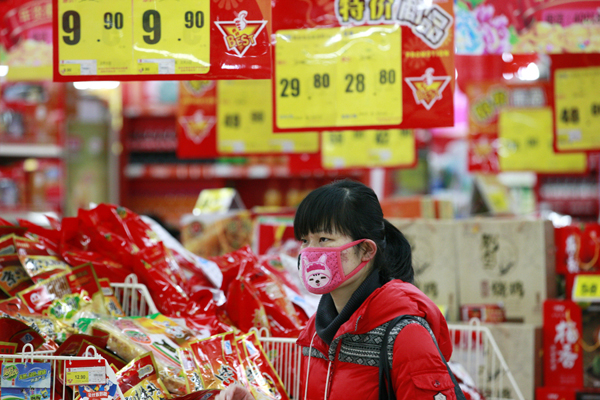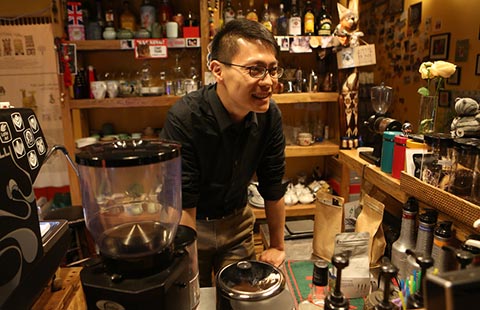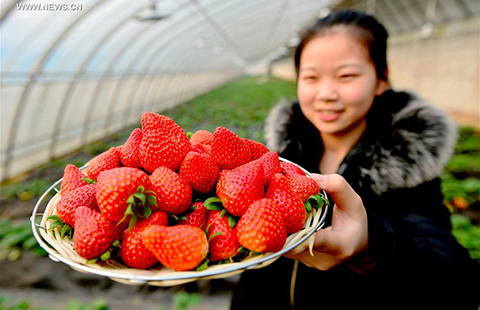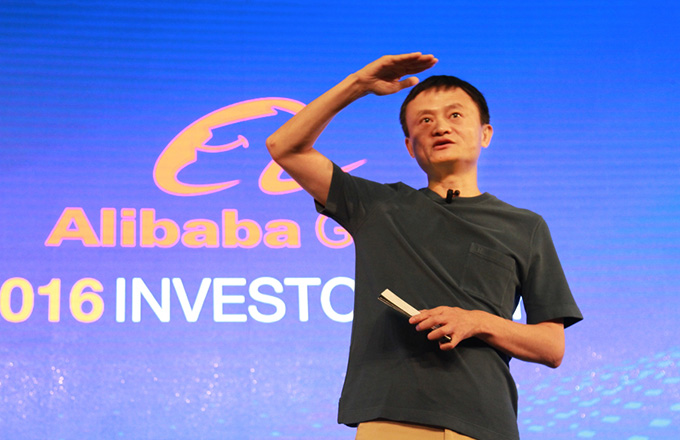Inflationary pressures looming in China while economy firms up
 |
|
A woman selects goods at a supermarket in Huaibei, Anhui province, Feb 14, 2017. [Photo/VCG] |
BEIJING - Accelerated consumer and industrial prices growth indicates nascent inflationary pressure on the Chinese economy, despite the good start to 2017.
The consumer price index rose 2.5 percent year on year last month, fractionally above market expectations of 2.4 percent and the strongest in two and a half years. Meanwhile, industrial inflation expanded even faster, with the producer price index, which measures costs of goods at the factory gate, hitting an over-five-year high of 6.9 percent.
From condiments to rentals, prices have increased in almost every subdivision of consumer goods and services, leading to concerns that China will likely see soaring prices after successfully taming inflation over the past years.
"Rising inflationary pressures have become a problem that cannot be ignored, which, some analysts caution, may lead to stagnation," said Yin Zhongqing, deputy director of the Financial and Economic Affairs Committee of the National People's Congress, the top legislature.
The pressures, caused by excess liquidity, had been subdued by lackluster industrial prices for years, but an unexpectedly strong commodity-driven PPI rebound since the end of 2016 changed this, according to Yin.
The People's Bank of China, the central bank, on Friday issued a policy report for the fourth quarter of the last year, which called for attention to rising inflation expectations over lingering uncertainties.
"It still needs more observation," Huang Yiping, central bank advisor and Peking University professor, said, "The CPI, whether rising rapidly or not in the future, influences macroeconomic policies."
Price increases were well retained in China last year. The CPI only increased 2 percent from a year ago, far below the official 3-percent upper limit. The mild consumer inflation, along with a full-year PPI decline, prompted China to implement a prudent monetary policy with an easing bias last year.
Partly due to the overall price changes, the authorities are moving away slightly from their old policy stance.
At the annual Central Economic Work Conference in December, the central leadership decided China's monetary policy will be "prudent and neutral" this year to keep appropriate liquidity levels and avoid large injections.
"A neutral state is neither tight nor loose," Yi Gang, deputy governor of the PBOC, said at an economic forum held last week.
The central bank has already started to guide market rates higher. It has raised the short- and long-term lending rates between banks, a barometer of the overall lending climate, a move widely interpreted as a policy shift.
Beijing-based investment bank CICC expects the PBOC to continue phasing out monetary easing to rein in asset prices and inflation.
Despite the looming risks, analysts dismissed excessive concerns over prices this year, projecting CPI growth to likely to retreat in February and PPI growth to peak in the first quarter.
China's general inflation level will rise for the whole year, with the CPI at 2.6 percent, well under the government's target, Li Xunlei, chief economist of Zhongtai Securities, said, adding "mild inflation will be boon for consumption."
Besides, the stabilizing economy will give policymakers more room to control prices, Yin said.
Exports and imports staged strong rebounds in January, while official manufacturing purchasing managers' index remained in expansionary territory for six consecutive months.
The central government will announce its annual CPI target for 2017 in its work report during the upcoming parliamentary sessions in March, which is expected to remain around 3 percent.
Inflation and unemployment data are significant indicators for Chinese authorities to examine the country's economic health, in addition to the GDP.
The Chinese economy grew 6.7 percent year on year in 2016, the lowest reading in nearly three decades, but within the government's target range.























